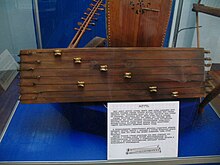Kazakh music

The Kazakh music is in Central Asia -based folk music and art music of the Kazakhs , on old Turkish - Persian Music forms a local and elements shamanic based tradition.
Traditional musical instruments
Most common are plucked instruments , mainly in the Tajik music occurring dombra with two strings , which in the interval of a fifth tuned. Another lute is the kobys , a string instrument with a resonance body made of animal skin and two strings and a bow made of horse hair . Like the string instruments mentioned, the sybyzɣy , a flute made of wood or reed with four to six finger holes , which is played more rarely and mainly by shepherds, has Turkish origins. A representative of the Asian double reed instruments surnai is the syrnaj .
The jew's harp tschang-kobys ( chang-kobuz ), the harp šerter and the zither jetigen come from Central Asia . The dahylpaz is a boiler drum with a wooden body, which was attached to horse saddles in the 19th century and used by military bands , after which, like other folk musical instruments, it fell out of use and is used again today.
Kazakh music in the 20th century
During the time of the Soviet Union, Kazakh folk music was subject to the requirements of socialist realism and was accordingly shaped by the desire to be generally understandable, conservative and nationally oriented.
A music ethnologist and composer with great creative power during this time was Alexander Wiktorowitsch Satajewitsch (1869-1936).
A pop music band founded in 2001 is Muzart , who became known for their mixture of Kazakh folk music and techno . Her three musicians are Meirambek Besbaev, Saken Maigasiev and Kenshebek Shanabilov.
Institutions and composers
The Musical-Dramatic University, founded in 1931, was the first higher education institution for music in Kazakhstan. Two years later, the Kazakh State Qurmanghazy Orchestra of Folk Musical Instruments was founded. There is also the Kazakh State Philharmonic Orchestra, the Kazakh National Opera and the Kazakh State Chamber Orchestra.
Important conservatories are the Qurmanghazy Conservatory in Almaty and the National Conservatory in the capital Nur-Sultan (Astana until 2019) .
The Asyl Mura Foundation archives and publishes historical recordings of Kazakh music.
The orchestra for folk musical instruments and the Conservatory in Almaty were named after Kurmangasy Sagyrbajew , a famous composer and dombra player of the 19th century. Other Kazakh composers were Korkyt, Tattimbet, Sougur, Bayserke, Makhambet, Khazanghap, Yerkegali Rakhmadiev, Almaz Serkebayev, Mukhan Tulebayev, Tles Kazhgaliev, Nagim Mendygaliev, Achmet Schubanow , Ghaziza Akhmetkhysy Zhoty Rakulova, and Akhmetkhysy Sagotyatanova, Akhmetkhysy Zhotyatanova.
literature
- Jean Durin: Central Asia. In: Ludwig Finscher (Ed.): Music in Past and Present , Sachteil 9, 1998, Sp. 2322–2326
- Alexander Wiktorowitsch Satajewitsch: 1000 songs of Kyrgyz / Kazakh people: Tunes and melodies. Orenburg, 1925.
- Alexander Wiktorowitsch Satajewitsch: 500 songs and kyuis of Aday, Bukey, Semipalatinsk, and the Ural Kazakhs. Alma-Ata, 1931.
Web links
- Noriko Toda: From Folklore to Soviet National Culture - The Process of Formation of "Kazak National Music" (1920-1942). Slavic Research Center, Hokkaido University

